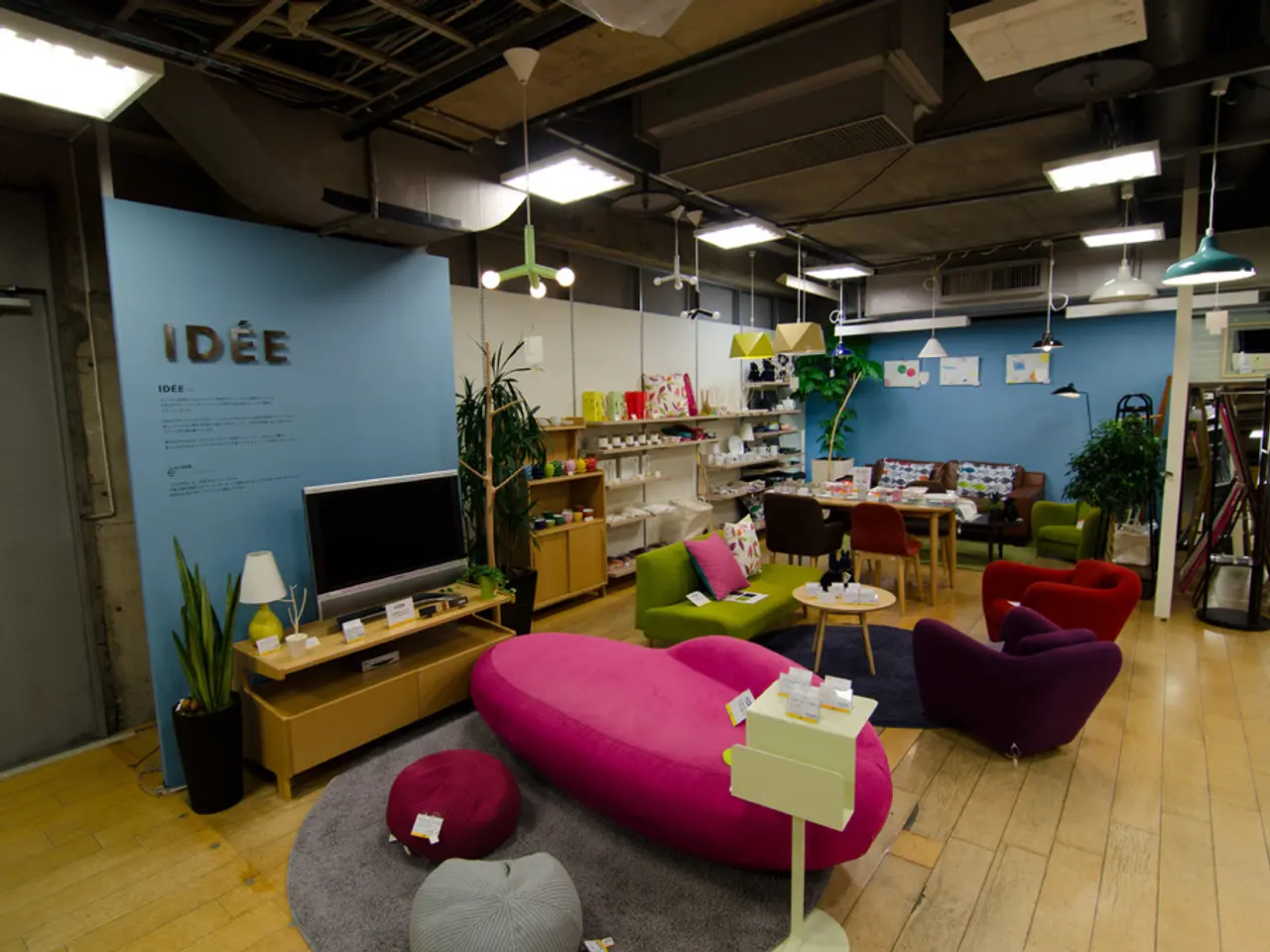Optimizing Livability: Strategies for Organizing Living Room Furniture
In the heart of many homes, the living room serves as a gathering place for family and friends. To create a living room layout that encourages both movement and connection, consider these expert tips.
By dividing your living room into distinct areas for relaxing, reading, or entertaining, you can create multiple functional zones. Use rugs, furniture placement, or low shelving as subtle dividers to provide visual structure while supporting different activities without cluttering the space.
Position furniture thoughtfully for zoning. For instance, placing a sofa with its back to a dining area or a sideboard between the kitchen and lounge can define zones without blocking flow. This maintains openness while guiding movement and connection between spaces.
Maintaining clear pathways is essential for easy circulation throughout the living room. Avoid pushing all pieces against walls to create a cozy, inviting, and navigable layout.
To foster interaction and connection among occupants, consider a U-shaped or L-shaped seating grouping. Anchoring this area with a rug can define it visually and add warmth.
Layer lighting for mood and flexibility. Use a combination of ambient, task, and accent lighting to create depth, comfort, and adaptability for different activities across zones.
Mixing materials and textures can add visual interest and warmth to the living room environment. Blend upholstery, wood, metal, and woven elements without overwhelming the senses.
Incorporate flexible and modular furniture like ottomans with storage or extendable tables that can adapt to various uses and evolving lifestyle needs, supporting both casual and formal gatherings.
Ensure visual connectivity with adjacent areas by using consistent colours and materials and maintaining clear sightlines to adjoining spaces like dining rooms or balconies. Maximize window space or use floor-to-ceiling treatments to boost vibrancy and encourage movement by drawing focus towards outdoor vistas or patio access.
Personal touches like family photos, souvenirs, and handmade crafts can reflect one's personality and invite conversation. A gallery wall featuring art and family photos can narrate one's journey.
Soft textiles like warm blankets and plump cushions can be used to create a warm and inviting vibe. Mixing textures, adding greenery, and choosing artwork that inspires positivity can help create an inviting and visually appealing living room.
By combining these strategies, your living room will feel open and airy, yet cozy and inviting, perfectly balancing vibrancy, functionality, and a welcoming atmosphere that promotes both movement and meaningful connection.
[1] Visit this page for more ideas on creating a functional living room layout. [2] See this here for tips on layering lighting in your living room. [3] Learn more about mixing materials and textures in your living room decor. [4] Discover the benefits of an open layout in a living room.
- To further enhance the living room's functionality, consider implementing smart AI-powered solutions for automation, such as adjustable lighting systems, automated glass blinds, or smart heating and cooling systems, improving the lifestyle of homeowners and interior-design enthusiasts.
- As technology progresses, incorporating smart glass into the living room's interior-design can offer numerous benefits, including privacy control, solar management, and even interactive displays, seamlessly blending home-and-garden spaces with modern lifestyles.
- A smart home system can help maintain a cozy and energy-efficient living room by automatically adjusting lighting, temperature, and music to the occupants' preferences, making the living room a perfect space for relaxation, entertainment, and meaningful connection.
- With the rise of smart home technologies, integrating AI-powered lifestyle products like automation systems, smart glass, and mobile apps into your living room can revolutionize the way you experience and interact with your home, creating a truly modern and inviting environment.




